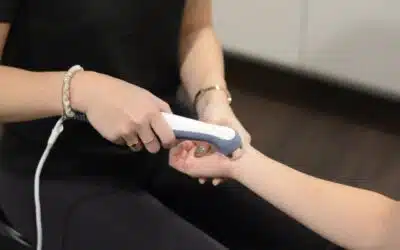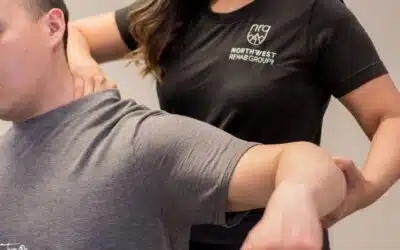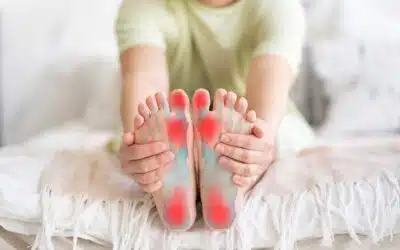Orthotics are devices designed to support and improve the function of the musculoskeletal system. They are often used to correct or alleviate foot, ankle, and lower limb problems, but can also be used to address issues in other parts of the body. Orthotics can be custom-made or off-the-shelf, and are typically made from a variety of materials such as foam, plastic, or metal. They are designed to provide support, stability, and alignment to the body, and can be worn inside shoes or as part of a brace or splint.
Orthotics can come in many different forms, including custom foot orthotics, insoles, arch supports, braces, and splints. Insoles are perhaps the most common type of orthotic, and are designed to fit inside a shoe to provide support and cushioning to the foot. Arch supports are similar to insoles, but are specifically designed to provide additional support to the arch of the foot. Braces and splints are used to provide support and stability to a specific joint or body part, and are often used in the treatment of injuries or conditions such as plantar fasciitis or arthritis.
Key Takeaways
Orthotics are custom-made or off-the-shelf devices designed to support, align, or improve the function of the foot or ankle.
There are different types of orthotics, including arch supports, insoles, and custom-made shoe inserts, each serving a specific purpose.
Orthotics can benefit individuals with foot or ankle pain, flat feet, high arches, arthritis, diabetes, and other conditions that affect the lower extremities.
Wearing orthotics can help improve foot function, reduce excessive forces that lead to foot injury, provide additional arch support to prevent overpronation, and offer cushioning in key areas of the feet.
To get fitted for orthotics, a podiatrist or orthopedic specialist will conduct a thorough evaluation of your feet, ankles, and gait to determine the best type of orthotic for your needs.
Proper care for orthotics includes regular cleaning, avoiding exposure to extreme temperatures, and checking for wear and tear to ensure they continue to provide the necessary support.
Types of Custom Orthotics
There are two main types of orthotics: custom-made and off-the-shelf. Custom-made orthotics are designed specifically for an individual’s unique foot shape and biomechanics. They are typically made by taking a mold or scan of the foot, and then creating a custom device based on the specific needs of the individual. Custom-made orthotics in Vancouver are often more expensive than off-the-shelf options, but they can provide a higher level of support and comfort. Custom orthotics are particularly beneficial for treating specific medical conditions, such as severe flat feet or for individuals recovering from lower body surgeries, as they offer tailored relief and help prevent foot deformities.
Off-the-shelf orthotics, on the other hand, are pre-made devices that are available in a range of sizes and styles. They are typically less expensive than custom-made orthotics, and can be purchased without a prescription at many drugstores and specialty shoe stores. While off-the-shelf orthotics may not provide the same level of customization as custom-made options, they can still be effective in providing support and relief for many individuals. Foot orthotics, whether custom or off-the-shelf, can address various foot conditions such as bunions, hammertoes, neuroma, heel pain, and fallen arches, and are beneficial for athletes, overweight individuals, and anyone who must walk or stand for prolonged periods.
Who Can Benefit from Orthotics for Foot Pain?
Orthotics can benefit a wide range of individuals, from athletes looking to improve their performance to older adults seeking relief from foot pain. They can be particularly beneficial for individuals with certain medical conditions or injuries, such as flat feet, high arches, plantar fasciitis, arthritis, diabetes, or foot deformities. Orthotics can also be helpful for individuals who spend long periods of time on their feet, such as healthcare workers or retail employees.
Athletes can also benefit from orthotics, as they can help to improve performance and reduce the risk of injury. For example, orthotic insoles can provide additional cushioning and support during high-impact activities such as running or jumping. Additionally, orthotic braces can help to stabilize the ankle and prevent sprains or other injuries during sports. Orthotics can be customized for use in athletic shoes to provide the necessary support and comfort for athletes.
Orthotics can also help alleviate knee pain caused by various foot conditions. For example, orthotics can be used to treat different conditions like patellofemoral syndrome, which can lead to knee pain.

How to Get Fitted for Orthotics
If you think you could benefit from orthotics, the first step is to schedule an appointment with a healthcare professional who specializes in orthotics, such as a podiatrist or orthopedic specialist. During your appointment, the healthcare professional will conduct a thorough evaluation of your feet, ankles, and lower limbs to assess your biomechanics and identify any issues that may be contributing to your symptoms. Orthotics play a crucial role in treating foot and ankle concerns by providing additional support and cushioning in key areas of the feet.
Depending on your specific needs, the healthcare professional may recommend custom-made orthotics or off-the-shelf options. If custom-made orthotics are recommended, they will take a mold or scan of your feet to create a device that is tailored to your unique needs. If off-the-shelf orthotics are recommended, the healthcare professional will help you select the best option for your needs and ensure that they fit properly.
Common Conditions Treated with Orthotics: Plantar Fasciitis
Orthotics can be used to treat a wide range of conditions affecting the feet, ankles, and lower limbs. Some common conditions that may benefit from orthotic intervention include:
Plantar fasciitis: Orthotic insoles can provide additional support and cushioning to relieve pain and inflammation associated with plantar fasciitis.
Flat feet: Orthotic arch supports can help to provide additional support and stability for individuals with flat feet.
Arthritis: Orthotic braces can help to stabilize the joints affected by arthritis and reduce pain and inflammation.
Diabetic neuropathy: Orthotic insoles can help to redistribute pressure on the feet and reduce the risk of ulcers and other complications associated with diabetic neuropathy.
Heel pain: Custom foot orthotics can provide relief by addressing specific problems in the foot, particularly for conditions such as heel pain and Achilles tendon pain.
Uncomfortable or sore spots: Soft orthotics, also known as ‘accommodative orthotics,’ made from soft compression materials, can provide cushioning to alleviate pressure on uncomfortable or sore spots from conditions such as plantar fasciitis or diabetic foot ulcers.
Tips for Caring for Your Orthotics
Proper care and maintenance of your orthotics is essential to ensure that they continue to provide effective support and relief. Here are some tips for caring for your orthotics:
Clean them regularly: Wipe down your orthotics with a damp cloth or mild soap and water to remove dirt and debris.
Allow them to air dry: After cleaning your orthotics, allow them to air dry completely before wearing them again.
Replace them as needed: Over time, orthotics may wear down or lose their effectiveness. It’s important to replace them as recommended by your healthcare professional.
Wear them consistently: To experience the full benefits of your orthotics, it’s important to wear them consistently as directed by your healthcare professional. Wearing orthotics can help improve foot function, reduce excessive forces that lead to foot injury, provide additional arch support to prevent overpronation, and offer cushioning in key areas of the feet.
The Future of Orthotics: New Innovations and Technologies
As technology continues to advance, so too do the possibilities for orthotic devices. One exciting development in the field of orthotics is the use of 3D printing technology to create custom-made devices. This technology allows for greater precision and customization in the design of orthotics, resulting in devices that are more comfortable and effective for individuals with unique foot shapes and biomechanics.
Another area of innovation in orthotics is the development of smart orthotic devices that incorporate sensors and other advanced technologies to monitor movement and provide real-time feedback. These devices have the potential to revolutionize the way orthotics are used, allowing for more personalized and adaptive support for individuals with a wide range of needs.
In addition to technological advancements, there is also ongoing research into new materials and designs for orthotic devices. For example, researchers are exploring the use of advanced materials such as carbon fiber and titanium to create lightweight yet durable orthotic braces that provide optimal support and stability. Furthermore, custom orthotics are being developed for specialized footwear like ski boots, ensuring a custom fit and high-quality materials that offer support and comfort during various activities.
In conclusion, orthotics are versatile devices that can provide support and relief for a wide range of individuals with foot, ankle, and lower limb issues. Whether you’re an athlete looking to improve performance or an older adult seeking relief from foot pain, orthotics may be able to help. By understanding the different types of orthotics available, who can benefit from them, how to get fitted for them, common conditions treated with them, tips for caring for them, and the future of orthotics with new innovations and technologies, you can make informed decisions about whether orthotics may be right for you. If you’re experiencing foot pain or other issues affecting your lower limbs, consider scheduling an appointment with a healthcare professional who specializes in orthotics to explore your options for relief and support.
FAQs
What are orthotics?
Orthotics are devices designed to support, align, correct or improve the function of the foot. They are often used to treat various foot and ankle conditions, as well as to provide support for people with certain medical conditions.
What conditions can orthotics help with?
Orthotics can help with a wide range of conditions, including plantar fasciitis, heel pain, flat feet, high arches, arthritis, diabetes-related foot problems, and various sports injuries. They can also be used to provide support and stability for people with neurological or musculoskeletal conditions.
How are orthotics made?
Orthotics are typically custom-made to fit the individual’s foot and address their specific needs. They are often created using a mold or scan of the foot, and are then crafted from various materials such as foam, plastic, or carbon fiber.
Are orthotics only for adults?
No, orthotics can be used for people of all ages, including children. In fact, orthotics can be particularly beneficial for children with certain foot conditions or gait abnormalities, as they can help to support proper foot development and alignment.
Do I need a prescription for orthotics?
In most cases, yes. While there are over-the-counter orthotic options available, custom-made orthotics typically require a prescription from a healthcare professional such as a podiatrist or orthopedic specialist. This is to ensure that the orthotics are tailored to the individual’s specific needs.






0 Comments